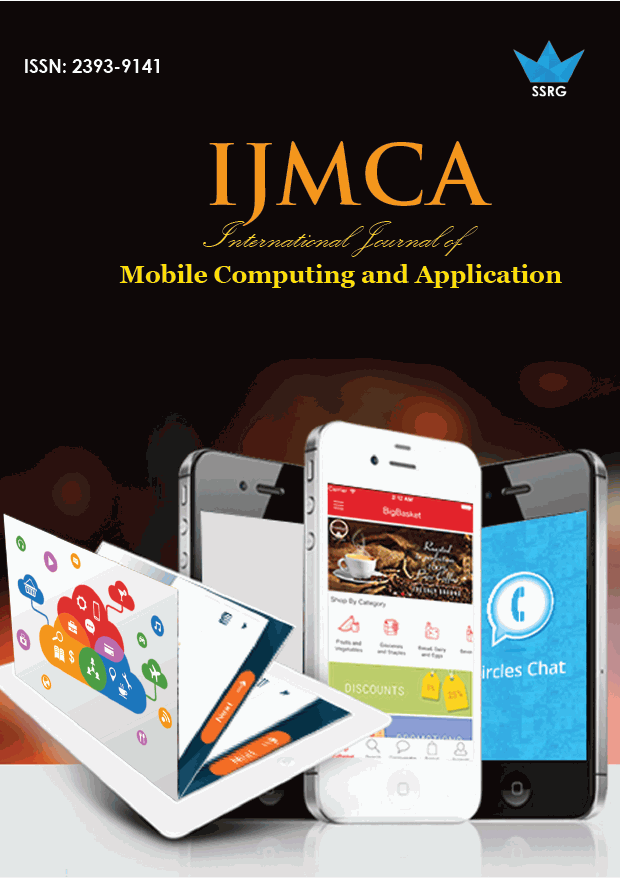Analysis of Uplink Performance of 5G mm-Wave Networks in Contrast to 4G Networks

| International Journal of Mobile Computing and Application |
| © 2023 by SSRG - IJMCA Journal |
| Volume 10 Issue 3 |
| Year of Publication : 2023 |
| Authors : R. Padmasree, P. Pranaya |
How to Cite?
R. Padmasree, P. Pranaya, "Analysis of Uplink Performance of 5G mm-Wave Networks in Contrast to 4G Networks," SSRG International Journal of Mobile Computing and Application, vol. 10, no. 3, pp. 1-8, 2023. Crossref, https://doi.org/10.14445/23939141/IJMCA-V10I3P101
Abstract:
5G, the latest wireless communication network, offers high-speed data transmission capabilities and is known as New Radio (NR). It serves as an extension of 4G technology. The main objective of this research is to analyze the physical layer of 5G NR and 4G Long Term Evolution (LTE) using MATLAB 2020a. In this context, the study evaluates the performance of 4G and 5G in the uplink cell, focusing on metrics such as Throughput, Spectral Efficiency, Latency, and Block Error Rate (BLER). It also highlights the differences between 4G LTE and 5G NR. Notably, 5G outperforms 4G in various aspects: it achieves a spectral efficiency of 25 bps/Hz, while 4G only manages 2.52 bps/Hz. Throughput for 5G shows a 5% improvement over 4G (considering 300 frames). The latency in 5G is reduced to less than 0.1ms compared to 4G, and the Block Error Rate has decreased from 0.02 to 0.01. These findings illustrate that 5G offers a wide range of services with high data rates, extensive coverage, reduced latency, increased system capacity, and enhanced user connectivity across the board.
Keywords:
Block error rate, Latency, Physical layer, Spectral efficiency, Throughput, Uplink cell.
References:
[1] Antti Toskala, and Harri Holma, LTE for UMTS Evolution to LTE Advanced, 2nd ed., John Wiley & Sons, pp. 1-576, 2011.
[Google Scholar] [Publisher Link]
[2] Chun-Chuan Yang et al., “Adaptive Load-Based and Channel-Aware Power Saving for Non-Realtime Traffic in LTE,” EURASIP Journal on Wireless Communications and Networking, vol. 2015, no. 1, pp. 1-13, 2015.
[CrossRef] [Google Scholar] [Publisher Link]
[3] Emna Hajlaoui et al., “4G and 5G Technologies: A Comparative Study,” 5th International Conference on Advanced Technologies For Signal and Image Processing, ATSIP, pp. 1-6, 2020.
[CrossRef] [Google Scholar] [Publisher Link]
[4] Almudena Díaz Zayas, and Pedro Merino, “The 3GPP NB-IoT System Architecture for the Internet of Things,” IEEE International Conference on Communications Workshops (ICC Workshops), IEEE, pp. 277-282, 2017.
[CrossRef] [Google Scholar] [Publisher Link]
[5] Afif Osseiran et al., “Scenarios for 5G Mobile and Wireless Communications: the Vision of the Metis Project,” IEEE Communications Magazine, vol. 52, no. 5, pp. 26-35, 2014.
[CrossRef] [Google Scholar] [Publisher Link]
[6] Xingqin Lin et al., “5G New Radio: Unveiling the Essentials of the Next Generation Wireless Access Technology,” arXiv, pp. 1-8, 2018.
[CrossRef] [Google Scholar] [Publisher Link]
[7] Grigol Basilashvili, “Study of Spectral Efficiency for LTE Network,” American Scientific Research Journal for Engineering, Technology, and Sciences, vol. 29, no. 1, pp. 21-32, 2017.
[Google Scholar] [Publisher Link]
[8] Diksha Duggal, and Jyoteesh Malhotra, “Performance Analysis of Long Term Evolution: Physical Channels,” International Journal of Future Generation Communication and Networking, vol. 9, no. 3, pp. 269-278, 2016.
[CrossRef] [Google Scholar] [Publisher Link]
[9] Yasin Kabalcı, and Muhammad Ali, “Throughput Analysis over 5G NR Physical Uplink Shared Channels,” 2nd Global Power, Energy and Communication Conference (GPECOM), IEEE, pp. 345-349, 2020.
[CrossRef] [Google Scholar] [Publisher Link]
[10] Thomas O. Olwal, Karim Djouani, and Anish M. Kurien, “A Survey of Resource Management Toward 5G Radio Access Networks,” IEEE Communications Surveys & Tutorials, vol. 18, no. 3, pp. 1656-1686, 2016.
[CrossRef] [Google Scholar] [Publisher Link]
[11] Dajie Jiang , and Guangyi Liu, An overview of 5G requirements, 5G Mobile Communications, Springer, pp. 3-26, 2017.
[CrossRef] [Google Scholar] [Publisher Link]

 10.14445/23939141/IJMCA-V10I3P101
10.14445/23939141/IJMCA-V10I3P101